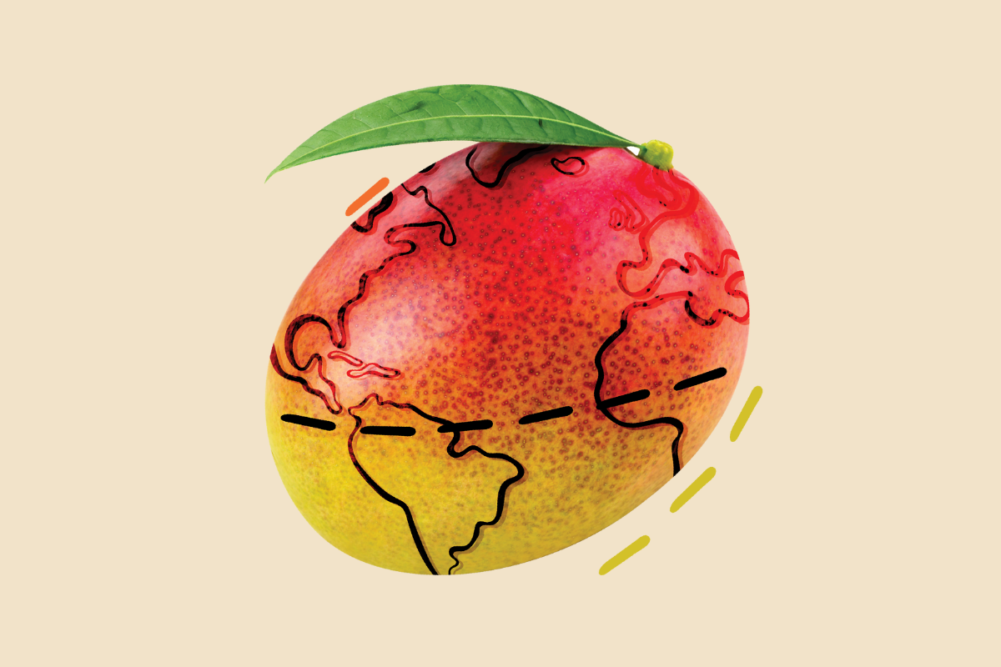When you hold a mango in your hand, you hold not only one of the world’s most popular fruits, but also 5,000 years of a seemingly impossible history. Originating in India all those thousands of years ago, mangos (without the help of planes, trains, and automobiles) gradually spread through Asia and the rest of the world. Even more intriguing, is the spread of mango across the globe. Mangos have a large center seed, which means they relied solely on ancient explorers and merchants to carry them to new lands, across oceans and continents alike: transporting mangos was an act of passion.
It wasn’t until the 1800s that mangos were first grown in the U.S, and today you can find thousands of varieties worldwide. With such a rich history, mangos are grown and eaten across the world with, each place boasting its own unique mango culture.
Diving a little deeper into the history of the ‘King of Fruits’ - mangos are the national fruit of India, Pakistan, and the Philippines – not to mention the national tree of Bangladesh. Southeast Asia offers an intriguing landscape bursting with bustling adventure that has captivated travelers for centuries. This region’s diverse nature weaves together the most awe-inspiring scenery, age-old cultural beliefs and traditions, and a variety of deliciously distinct recipes using mangos as different stages of their maturity. Nearly every climate in the world is represented here, from sublime coastlines and golden-sand tropics to snow-capped mountain tops and lush rain forests.
With temperate, slightly arid climates both Australia and Africa are major producers of mango around the world. Moving across the globe, mangos are cultivated throughout practically all Latin America, in the tropical and subtropical regions and spanning countries from Mexico to Brazil to Chile. For many, biting into this juicy fruit is a happy memory that reminds them of family, friendship, and celebration! (Many consumers in the United States associate mango with the varieties grown in these regions).
With an abundance of mangos imported to the United States from the Caribbean, many domestic consumers have tasted mangos from these regions. Not only are mangos found locally throughout Haiti, Puerto Rico, Dominican Republic, Jamaica, and Trinidad & Tobago, they’re sewn into the cultural fabric of these countries.
The movement of mango across the various climates has resulted in thousands of varieties and a plethora of different ways to enjoy the fruit. From smoothies to side dishes, mangos are a staple of nourishment around the world. Not only are they used in various types of dishes, but mangos are even used at different levels of maturity to provide different flavor profiles - from sour to half ripe to ripe and sweet.
Unsurprisingly, mangos have become a part of the lifestyle in different regions around the world. And while the fruit may be consumed in different ways around the world, the joy mango brings is all the same no matter where you’re located. Eating a mango is truly a magical experience for many. Biting into this juicy fruit is regarded by many as a happy memory that lives on through family traditions encompassing anything from celebrations or recipes handed down through generations. These experiences occur around the world and have bonded many cultures and cuisines.
Though mangos are available year-round, June and July are some of the peak months to enjoy fresh mangos. In fact, June is National Mango Month while National Mango Day falls on July 22nd. The summer season brings several mango varieties into the market. With supplies of Honey (Ataulfo), Francis, Haden, and Tommy Atkins varieties headed to the U.S., operators and consumers alike can choose a mango with the right flavor, aroma, color, and texture for signature dishes.
The benefits of a mango reach far beyond the flexibility of its juicy, mouth-watering flavor! This magical, most-marvelous superfruit is not only a slice of history but a nutritious powerhouse, with over 20 vitamins and minerals.


